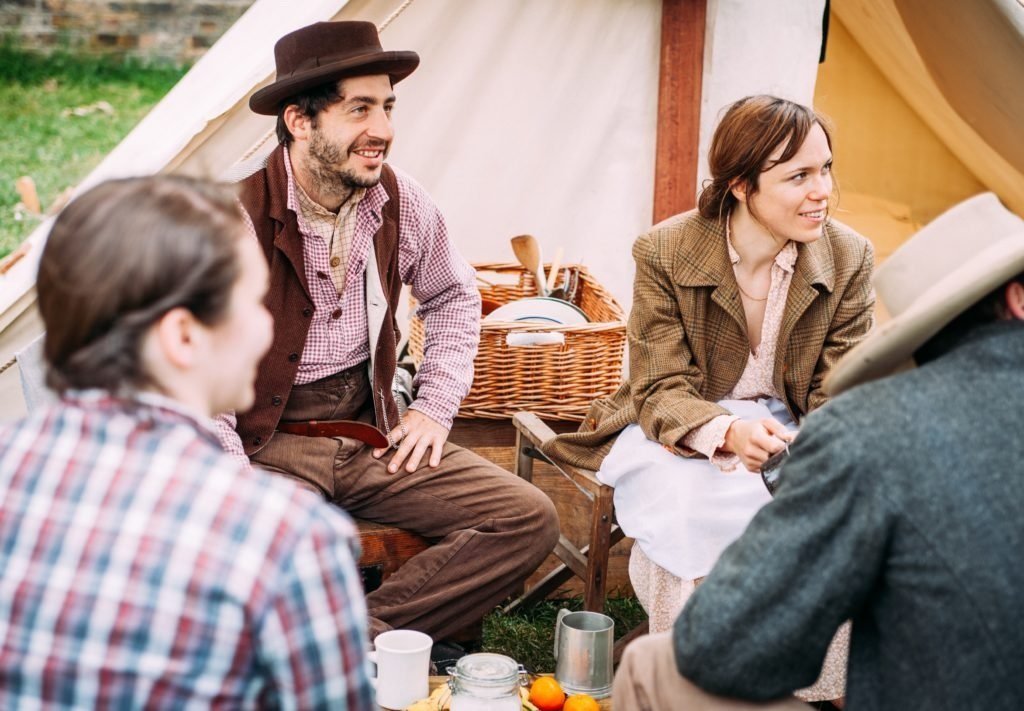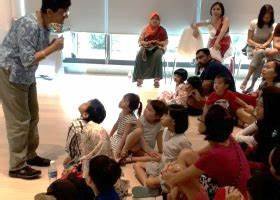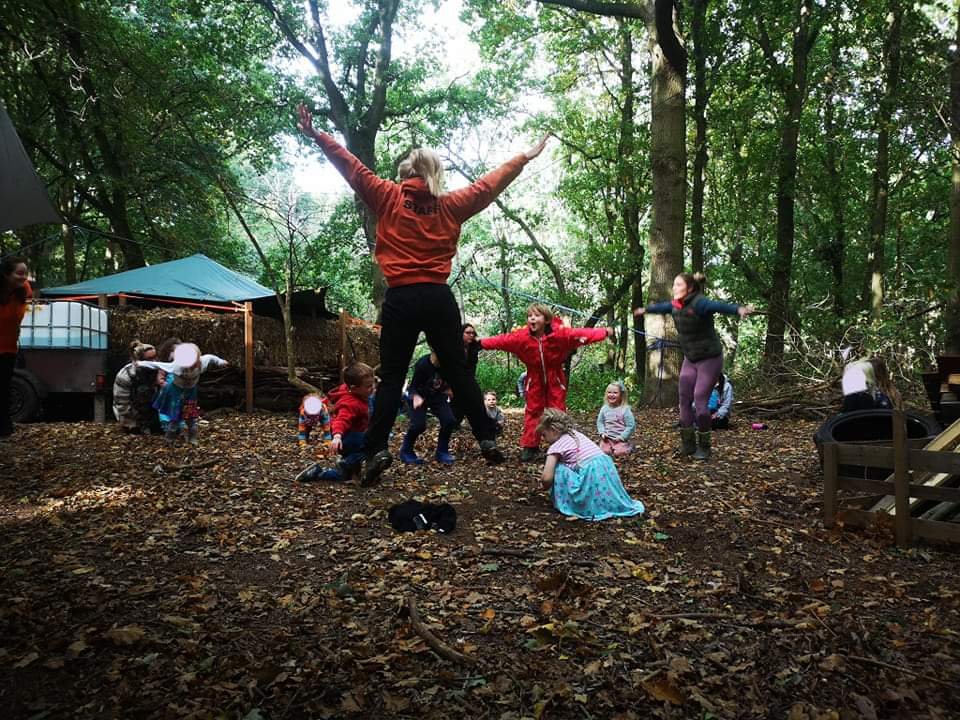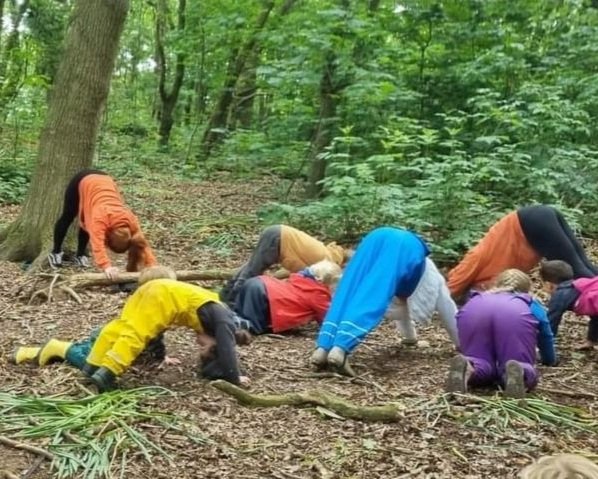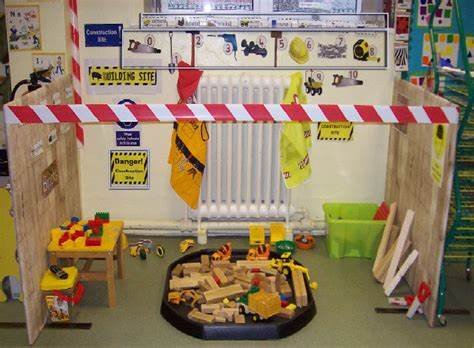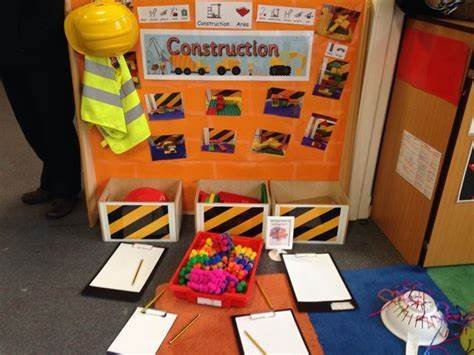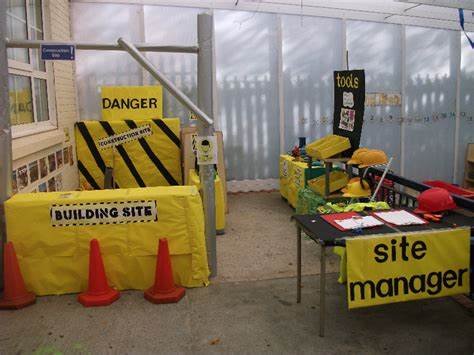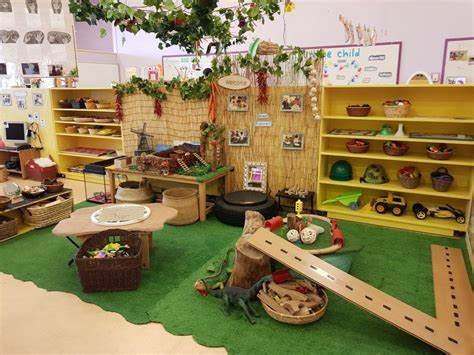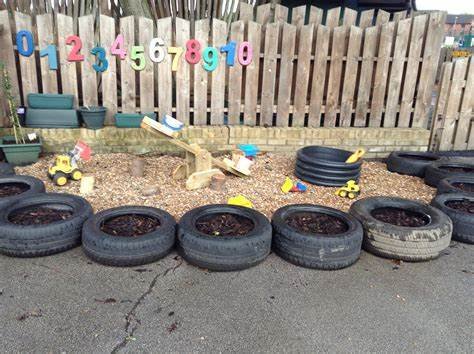What is Yoga Storytelling All About?
Yoga can be defined as much more than an exercise program, but it is a practice rooted in thousands of years of tradition that is about connecting your mind, body, spirit, and health together. As well as learning to tune into our bodies and minds in a busy world (Harper 2013)….
In our previous blog, ‘How to Have a Fabulous National Storytelling Week on a Budget’. We suggested that settings could incorporate yoga storytelling to support children’s learning development and well-being as part of National Storytelling Week 2023. So, this blog is going to explore the following:
· What is yoga storytelling?
· What are the proven benefits of yoga to children?
· Suggestions of where to start your yoga storytelling journey.
What is Yoga Storytelling?
Yoga can be defined as much more than an exercise program, but it is a practice rooted in thousands of years of tradition that is about connecting your mind, body, spirit, and health together. As well as learning to tune into our bodies and minds in a busy world (Harper 2013). I have recently been reading the book by Harper (2013) little flower yoga for kids, this is a fantastic read for the overview of developing a yoga and mindfulness program in settings.
Therefore, it is also important to consider what the trending word mindfulness means, beyond our current cultural practises of mindful colouring and activities! Blissfulkids (2022) have a fantastic definition of mindfulness which can also be shared with children:
“Mindfulness is simply… noticing what is happening right now.
Mindfulness is taking notice of how your body feels and what you see, smell and taste. Maybe you even feel emotions in your body, perhaps through a tightness somewhere, or a good sensation.
Mindfulness is also noticing what your mind is doing.”
Harper (2013) in her book and outlined program talks about 5 key elements of yoga and this includes mindfulness as part of yoga:
· Connect
· Breath
· Move
· Focus
· Relax
These 5 key elements when developing a yoga program are vital and important to understand as we think about the holistic practise of yoga. When thinking about yoga storytelling then what does this mean, this is a practise of storytelling in a fun and engaging way for young children that promotes all of the 5 elements above, connection, breathing, movement, focus and time to relax. While engaging in telling small stories to young children, whether we are making up stories, passing stories down from one generation to the next, or telling a story via a story book.
What are the proven benefits of yoga to children?
There are many proven benefits to yoga and mindfulness practices to supporting children’s well-being, learning and development and below are some of them:
· Supports developing tools to help self-esteem,
· Helps to manage stress,
· Helps to develop resilience,
· Increases focus,
· Supports academic performance,
· Supports emotional regulation,
· Supports memory and brain development,
· Supports general emotional well-being and balance,
· Promotes relaxation,
· Is energising,
· Supports strength and flexibility,
· Supports balance, proprioception, and vestibular sense.
(Mindfulness Communication and Such, 2023; Harper 2013; Goldberg 2013)
Starting Your Yoga Storytelling Journey?
Introducing something new to your setting can often be exciting, but equally overwhelming with knowing where to start. Here we are going to outline an idea of how to begin your yoga storytelling practice, so that you can develop it overtime. First you will need to focus on developing some skills, before perhaps doing some of the more complex wonderful children yoga books on the market that require a little bit of practising first (spoken from experience!!).
Before starting your yoga journey think about environment. Remembering that one of the key elements is relaxation, think about where in your setting you carry out yoga so that it does not happen in a crowded over stimulating area of your provision. You want somewhere that is not cluttered or full of distraction for those busy minds. Also, make sure that you have individual yoga mats for the children, so that they have their own boundary for their own physical space whilst completing yoga.
The book by DK My First Yoga is a great book for introducing the yoga poses to young children and getting them familiar with them at the beginning of your journey. Remember, that yoga time does not have to be a rush it might be that you start by using this book and learning 3 or 4 poses a session to begin with. This book is also fantastic because it has really simple explanations of the different poses and photos! It also is good at promoting the breathing element of yoga and not just the physical movements. (P.s. you need to feel confident while doing yoga, so if you cannot do a movement don’t use that one until you are confident in doing it!).
Once children are confident with their yoga movements this is a time to start to combine a few simple movements together to tell a story. For example, you could tell the 3 little pigs using just a few movements as you tell the story. For example, doing a mountain pose for the beginning of the story, the downward dog pose for when the wolf is huffing and puffing, and a strong tree pose to represent the houses. As the children become more confident and experienced at yoga you can develop more movements into the storytelling sessions.
You can also then progress to some fantastic books such as:
· Yoga Animals in the Forest by Christiane Kerr
· Good morning yoga by Mariam Gates
· Yoga Adventures by Jamaica Stevens and Jamaroo Kids
I hope you have found this blog helpful and are all excited to start your very own yoga storytelling sessions in your settings!
References:
Blissfulkids (2022) Mindfulness: What is it and How to Explain it to Kids and Adults, [online] https://blissfulkids.com/what-is-mindfulness-and-how-to-explain-it-to-kids/ [accessed 3/02/2023]
Goldberg, L. (2013) Yoga Therapy for Children with Autism and Special Needs. New York: Nortan and Company Inc.
Harper, J.C. (2013) Little Flower Yoga for Kids: A Yoga and Mindfulness Program to Help Your Child Improve Attention and Emotional Balance. Raincoast Books: Canada.
Mindfulness Communication and Such (2023) Mindfulness for Kinds [online] https://www.mindful.org/mindfulness-for-kids/ [accessed 3/02/2023]
How to Have a Fabulous National Story Telling Week on a Budget!
National Storytelling Week (NSTW) is a firm favourite of myself as an early years consultant. I am a firm believer that we all have a story inside us to tell, we are born storytellers. And this week gives us the opportunity to share stories, to build narratives and even better we can do it on a budget without spending hundreds of pounds!
Here are your 5 tips for doing NSTW on a budget:
1. Involve your community!
We will all have members of our teams, families, or local people in our community that have stories to tell. Whether It is a traditional or cultural story passed down from generation to generation Ask people in to tell a story or research stories that families share that they grew up with. Also, are day to day lives are made up of stories, from telling a story about going to the shops or a holiday that we have recently had. This is also a great time to look at the stories of different occupations, for example, the day in the life of a builder.
(Images left to right: Fresh Expressions 2023, Storytellers Singapore, 100 Stories Before School 2015)
2. Make your own puppets!
Practise scissor skills cutting out your favourite characters from magazines and catalogues. Then turn them into your own stick puppets for storytelling, by sticking them onto lollypop sticks. Or design on cardboard and carefully cut out your very own characters to be the centre of your story, perhaps a dragon, a princess or a monster! Or make some of simple finger felt finger puppets developing fine motor skills and sewing around the edge.
3. Model storytelling in play
As children play and add a narrative to their play they are naturally telling stories. Play alongside the children, modelling vocabulary structure and natural storytelling. Whether it is when you are playing with the small world toys, or making up stories in the garden about running away from a big scary monster. Children need to see us as storytellers as well.
4. Create story maps
Story mapping is a great way of involving children story telling and sequencing. You can use this to tell a story children are familiar with or use it as a tool to visually map out the story you are telling. It is great for highlighting the details of a story beyond beginning, middle and end as you draw pictures for the main points of the story. This is also a technique that children can then use to retell their own stories before they are ready to write.
(Aberford C of E Primary, 2017)
5. Yoga Storytelling
I was recently at an outdoor setting (Born to Woodland in Rayleigh Essex) and was very inspired by their yoga story time. They have a story of the month, e.g. the very hungry caterpillar and they use different yoga moves to support children's wellbeing and physical development. I loved this idea and is something you can easily makeup or do in your setting. There are also a variety of books and online resources available to help you with this.
(Photo Credits: The wonderful staff and children at Born to Woodland, Rayleigh Essex. Joining in their yoga stories! Born to Woodland is a setting that caters for children between the ages of 3 to 11 years old).
Supporting Storytelling Through Block Play in the Early Years
Children will go through different stages as they begin to use props to make up stories and add dialogue to their play…
For our final blog post in our block play series, we are going to look at how block play can support children to develop that inner storyteller. Whether that be through incorporating small-world play and props role-playing being construction workers. There is lots of opportunities and ways that we can support children to develop their narrative, communication and language skills, and personal social and emotional skills as they work together to add a storyline to their play.
What are the stages of story telling in play?
Children will go through different stages as they begin to use props to make up stories and add dialogue to their play. For example, children may begin to add voice sounds as the run a car across the floor going “brrm brrm”. This is the very early stage of children adding dialogue to represent their understanding and experiences. We then act out our familiar experiences using available props, for example, we may pick up the hammer and begin to bang the hammer and represent what they have observed others doing. As children get older, they begin to play alongside other children in their play, so for example, we all might be playing tea shops making teas and coffees. We are engaged in the same activity, but we are not necessarily reliant on each other for our play or interacting with one another. Children them move into the stage of collaborative play where they are working together to develop their storyline and direction of play.
The reason I share the stages of play is that it is important to reflect on where your individual children are in their journey when you are supporting storytelling through play. For example, if you have a child who is many solitary in their play but is beginning to add noises and sounds to their play. You maybe supporting them by modelling joining in and playing alongside others. Or using communication and language to invite them in and add narrative to a play and to show them perhaps (not an indefinite way as play is open ended) but suggestions that could spark their interest or enhance their play. For example, you build a bridge using the construction blocks. You test to see if it is high enough to fit the toy car underneath. You then might add some “brrm brrm” or “beep beep” noises as you move the cars around.
Ways to support storytelling in block play?
There are many ways that we can support story telling in block play, through providing children with a range of rich and wonderful experiences and resources. Below are some ideas to support children:
Have a range of fiction and non-fiction books around building and builder’s sites. This will give children knowledge and understanding that they can add into their story telling.
Have a local builder come in and talk about their job or visit a local builder’s site to see what happens.
Model to the children play and developing stories around available resources. For example, children might need to see an adult model how we use a spirit leveller to know how we use it.
Add in small-world props and resources based on children’s interests – e.g. cars, toy people, animals, dinosaurs and so on.
Provide story sacks or baskets with available resources to retell those familiar stories. For example, the 3 Billy Goats Gruff Book and puppets; with the building blocks. This may inspire the children to build their own bridge for the big bad troll to be hiding under and to retell the story. This can either be left as a provocation to see what the children do with it or it can be an adult directed activity where you work together to build the bridge and scaffold the children as they work and retell the story altogether.
Add dressing up items such as hard hats and high visibility jackets, to encourage them to role-play being builders.
Have real resources such as tape measures, rulers, spirit levellers and so on to support children to act out those experiences using the props around them.
Encourage children to share with others and talk about what they have built and describe it.
Join us for our next running of our webinar, ‘The Potential of Block Play in the Early Years’ on the 1st September 2022 at 7:30 pm
National Story Telling Week
29th January 2022 to 5th February 2022
Saturday will mark the start of this years, National Story Telling Week (NSTW). Quite often when we think about story telling we think about story time, with children sat on the floor listening to an adult read a book. This is not a wrong viewpoint, however, story telling goes beyond those books that we have written down. All of us enjoy listening to stories and even telling stories, even if it is about what Aunty May did last weekend or our recent holiday.
Stories are an important part of society, for generations we have passed stories down from generation to generation, with our traditional tales or folk laws. Families full of giggles as we sit and make up stories, as we share and enjoy time with one another or the bad Dad jokes that we are all familiar with. To a child reliving their experiences and acting them out in the role-play. Or even the words of songs that tell us a story, we see ourselves in them and we apply meaning or an interpretation of that music. Story telling can come in many forms and fundamental to our culture, cognition, literacy, and language development.
Often within my role as an early year’s consultant, but also in my years of experience working within nurseries I would hear the phrase “but I am not a good storyteller”. This makes my heart heavy, because I belief that everyone in society could tell a story, be a storyteller, not just authors and acclaimed writers, or performance artists. However, I know that for some people this can be a daunting experience. This is one of the reasons I developed the online webinar, ‘Developing the Storyteller Within’. (You can find out more by clicking here).
So, with NSTW fast approaching us, it made me consider this topic again. Perhaps with a renewed excitement and passion. We all have a personal story to tell, we all tell a story each day, even if we don’t realise it. For example, “You will never guess what…”. Or the classic, “The wind will change, and your face will stay like that”. These are all the beginnings of stories, or the end of stories handed down from generation to generation. So, let’s think about the power of harnessing those stories, sharing them with children but also developing stories alongside children.
We know that story telling can support children’s senses of belonging, personal social and emotional development, communication and language development, problems solving, literacy skills, and help them to work through those difficult situations they may encounter within their lives. Although, we know the benefits to our children’s learning and development, as well as well-being it can still be a daunting task of where to start in your early years setting. With this in mind, I have shared 3 starters to developing your storyteller within alongside the children.
1. The story telling bag – this is a great activity for circle time or small group time with children to help get them involved in telling stories. In the story telling bags have different characters (e.g., people, animals, or mystical creatures) and pictures or items for setting or events (for example, photo of the beach, or fake snow). Start by taking something out of the bag and beginning to tell a story, before passing it onto a child to add to the story taking something out of the bag and continuing the story.
2. Hot seating – hot seating is a popular way of getting children who are familiar with stories to explore characters and develop narratives. One person pretends to be someone from a story and other children ask questions, e.g. “Why did you go into the 3 bears house?” This gives the children the opportunity to develop the story more and think of their own responses.
3. What happened next – start at the end of a familiar story and think about what might happen next. For example, “What happened after Goldilocks ran out of the 3 bears house?”
I hope this gives your inspiration to join in some story telling with your children for NSTW, keep your eyes peeled for our activity pack we will be realising in the next few days ‘Telling Your Story for National Story Telling Week’.







